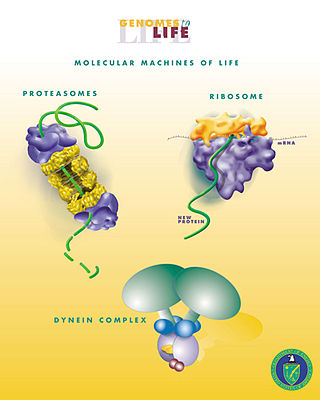
Biological engineering or bioengineering is the application of principles of biology and the tools of engineering to create usable, tangible, economically viable products. Biological engineering employs knowledge and expertise from a number of pure and applied sciences, such as mass and heat transfer, kinetics, biocatalysts, biomechanics, bioinformatics, separation and purification processes, bioreactor design, surface science, fluid mechanics, thermodynamics, and polymer science. It is used in the design of medical devices, diagnostic equipment, biocompatible materials, renewable energy, ecological engineering, agricultural engineering, process engineering and catalysis, and other areas that improve the living standards of societies.
Mehmet Toner is a Turkish biomedical engineer. He is currently the Helen Andrus Benedict Professor of Surgery at Massachusetts General Hospital (MGH) and Harvard Medical School, with a joint appointment as professor at the Harvard-MIT Division of Health Sciences and Technology (HST).
Peter W. Zandstra, is a Canadian scientist who is the Director of the Michael Smith Laboratories at the University of British Columbia.

Shu Chien is a Chinese–American physiologist and bioengineer. His work on the fluid dynamics of blood flow has had a major impact on the diagnosis and treatment of cardiovascular diseases such as atherosclerosis. More recently, Chien's research has focused on the mechanical forces, such as pressure and flow, that regulate the behaviors of the cells in blood vessels. Chien is currently President of the Biomedical Engineering Society.

George Alexander Truskey is an American biomedical engineer noted for his research on transport phenomena in biological systems, cardiovascular tissue engineering, and cell adhesion to natural and synthetic surfaces.
William Mark Saltzman was named the Goizueta Foundation Professor of Biomedical and Chemical Engineering at Yale University on July 1, 2002 and became the founding chair of Yale's Department of Biomedical Engineering in 2003. Saltzman's research aims to promote new methods for drug delivery and develop new biotechnologies to combat human disease. A pioneer in the fields of biomaterials, nanobiotechnology, and tissue engineering, Saltzman has contributed to the design and implementation of a number of clinical technologies that have become essential to medical practice today. His popular course Frontiers of Biomedical Engineering is available to everyone through Open Yale Courses.
Treena Livingston Arinzeh is an American biomedical engineer and academic.
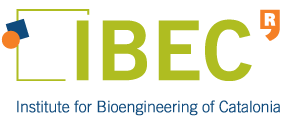
The Institute for Bioengineering of Catalonia (IBEC) is an institution engaged in basic and applied research in bioengineering and nanomedicine, with experts working on tissue regeneration, biomechanics, molecular dynamics, biomimetics, drug delivery, organs ‘on-a-chip’, cell migration, stem cells, artificial olfaction and microbial biotechnology. The institute was created by the Government of Catalonia, the University of Barcelona and the Polytechnic University of Catalonia in December 2005 and is located at the Barcelona Science Park. The director of the institute is Prof. Josep Samitier, who took over from founding director Josep A. Planell i Estany in 2013. In 2014 IBEC was named a "Severo Ochoa Centre of Excellence" by the Spanish Ministry of Economy and Competitiveness.
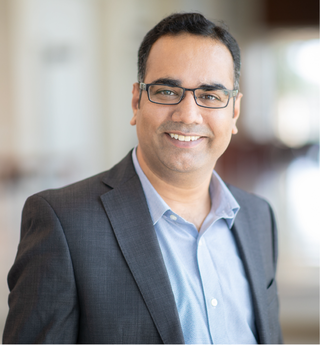
Akhilesh K. Gaharwar is an Indian academic and a professor in the Department of Biomedical Engineering at Texas A&M University. The goal of his lab is to understand the cell-nanomaterials interactions and to develop nanoengineered strategies for modulating stem cell behavior for repair and regeneration of damaged tissue.
Laura Elizabeth Niklason is a physician, professor and internationally recognized researcher in vascular and lung tissue engineering. She is the Nicholas M. Greene Professor of Anesthesiology and Biomedical Engineering at Yale University and co-founder, chief executive officer and president of Humacyte, a regenerative medicine company developing bioengineered human tissues.
Craig Alexander Simmons is a Canadian mechanobiologist and professor at the University of Toronto. He received a master's degree in mechanical engineering from Massachusetts Institute of Technology and a Ph.D. in mechanical engineering from the University of Toronto. Simmons contributes to the fields of mechanobiology, stem cells, microfluidics and tissue engineering.
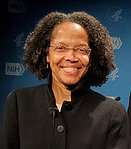
Gilda A. Barabino is the president of the Olin College of Engineering, where she is also a professor of biomedical and chemical engineering. Previously, she served as the dean of The Grove School of Engineering at the City College of New York, and as a professor in the Departments of Biomedical Engineering and Chemical Engineering and the CUNY School of Medicine. On March 4, 2021, she became the President-Elect of the American Association for the Advancement of Science.
Lucas H. Timmins is an American biomedical engineer and currently an associate professor at Texas A&M University. He is active in the fields of computational and experimental biomechanics and the application of these research domains to address prevalent challenges in cardiovascular medicine.

Christopher S. Chen, born in 1968, is an American biological engineer. He is the William Fairfield Warren Distinguished Professor of Biomedical Engineering at Boston University and member of the Wyss Institute for Biologically Inspired Engineering at Harvard University in Boston.
Manu Omar Platt is an American biomedical engineer serving as the director of the NIH Biomedical Engineering Technology Acceleration (BETA) center. He also serves as NIBIB Associate Director for Scientific Diversity, Equity and Inclusion.
Sina Y. Rabbany is the Jean Nerken Distinguished Professor of Engineering at Hofstra University, dean of the Fred DeMatteis School of Engineering and Applied Science, founding director of the school's Bioengineering program, and adjunct associate professor of bioengineering at the Weill Cornell Medical College of Cornell University. Under his tenure, the DeMatteis School's fast growth led to the school's planned expansion into a new Science and Innovation Center. His research concerns cellular and tissue engineering of the vascular system and investigates the impact of the biophysical microenvironment on the structure and function of endothelial cells. His research explores the capabilities of endothelial cells to build functional blood vessels and support organ regeneration. His h-index is 28 by Google Scholar.
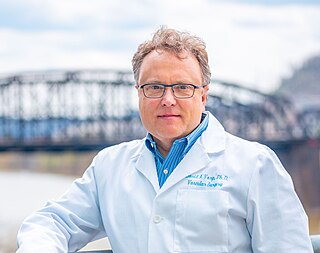
David A. Vorp is an American bioengineer, researcher, entrepreneur, and academic administrator noted for his contributions to aortic aneurysm biomechanics and pathobiology, and tissue engineered vascular grafts. He currently holds the titles of Associate Dean for Research at the University of Pittsburgh Swanson School of Engineering and the John A. Swanson Professor of Bioengineering, with secondary appointments in the departments of Cardiothoracic Surgery, Surgery, Chemical & Petroleum Engineering, and the Clinical & Translational Sciences Institute at the University of Pittsburgh. He also serves as the co-director of the Center for Medical Innovation., the acting director of the university's GRID Institute, and the director of the Vascular Bioengineering Laboratory.
Farshid Guilak is an American engineer and orthopedic researcher. He is the Mildred B. Simon Professor of Orthopaedic Surgery at Washington University in St. Louis and director of research at Shriners Hospitals for Children. He is also on the faculty of the departments of Biomedical Engineering, Mechanical Engineering & Materials Science, and Developmental Biology at Washington University.
Cynthia "Cindy" Reinhart-King is an American biomedical engineer who is a University Distinguished Professor at Vanderbilt University. Her research considers cell motility and adhesion. She serves as president of the Biomedical Engineering Society.
James H-C. Wang is a Chinese American orthopedic biomechanist and academic. Currently, he is a Professor at the Departments of Orthopaedic Surgery, Bioengineering, and PM&R at the University of Pittsburgh. In addition, he is a Faculty Member at the McGowan Institute for Regenerative Medicine.







